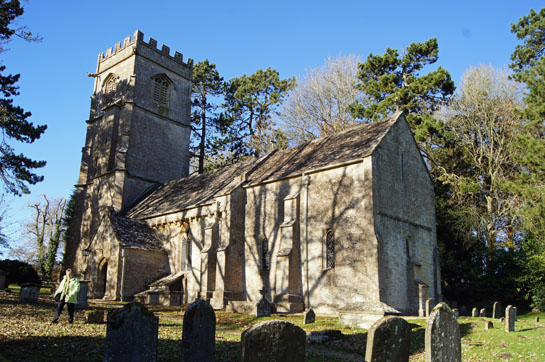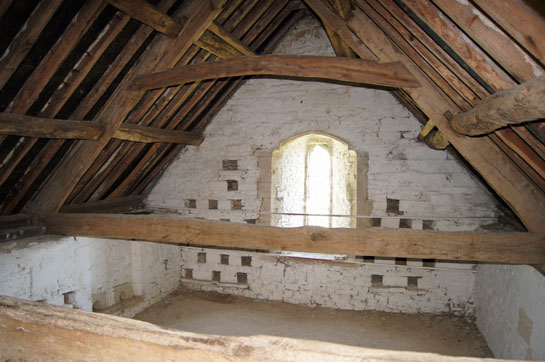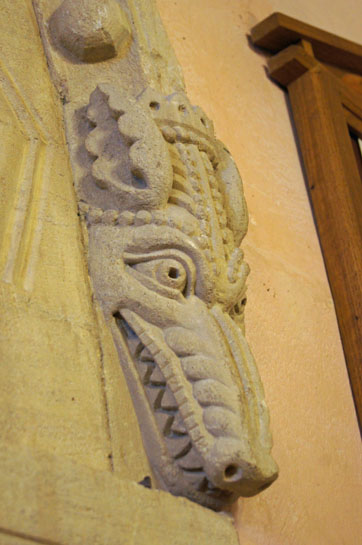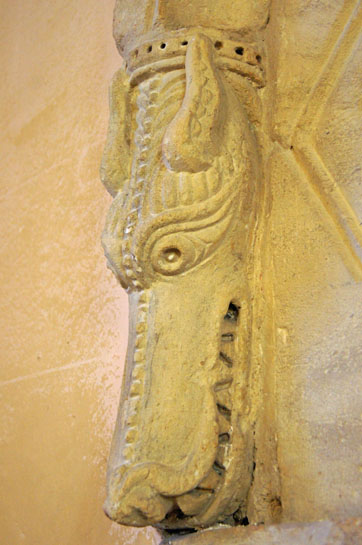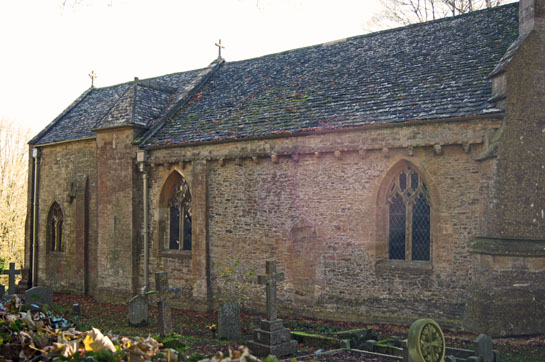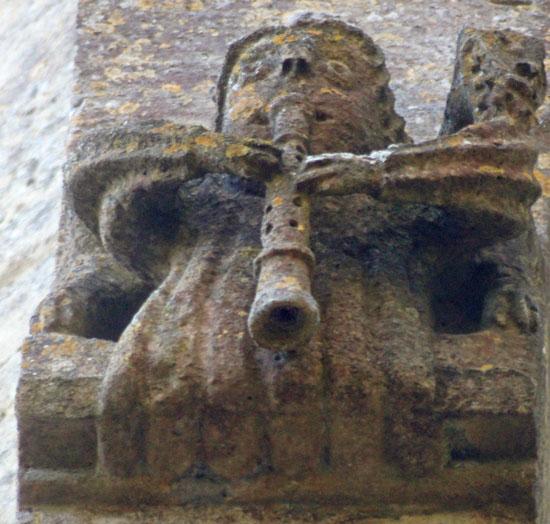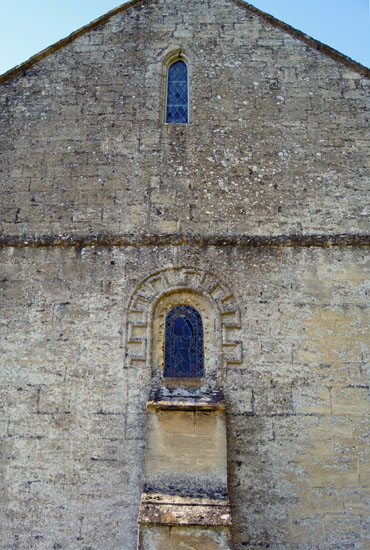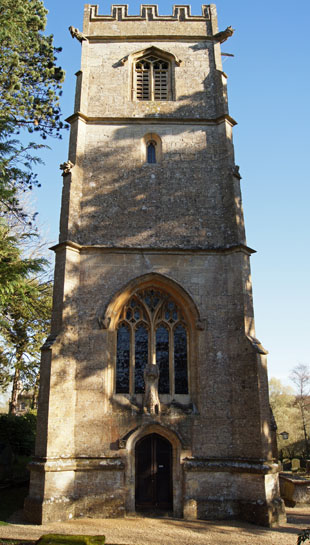|
Alphabetical List |
|
|
|
|
|
|
|
County List and Topics |
|
|
|
Please sign my Guestbook and leave feedback |
|
|
||||||||||||||||||||||
|
The sanctuary is pure Norman and a real delight, comparable with that of Kilpeck. The original tower arch and the sanctuary arch both have straightforward Norman zig-zag mouldings surrounded by courses of pellet and billet moulding respectively. The tower arch, however, also has two delightful dragon-head stops.similar to those on the west door of Bishops Cleeve, also in Gloucestershire. The east window is surrounded by more Norman moulding, this time with a pretty floral design inset between the courses of zig-zag. There is an elaborately-carved boss at the intersection of the four plain ribs of the sanctuary vault. Altogether, the sanctuary and the old tower arch make a delightful unspoiled late Norman composition. It is the outside of the church, however, that takes the breath away. The corbel table on both sides of the nave is of the highest quality and of delightful imagery. Like that at Kilpeck it is remarkably well preserved. Kilpeck’s is perhaps the most celebrated corbel table in England but if I had to choose I might marginally prefer Elkstone’s. Kilpeck’s has a delightful naivety about it, whereas Elkstone’s is, in my view, more sophisticated both in subject matter and in artistic quality; but, of course, such comparisons are purely subjective. In passing I would add that Romsey Abbey in Hampshire arguably has a corbel table to surpass all! The south doorway and tympanum are stunning and, fortunately, their state of preservation protected, as they are, by the c14 porch. There are many more elaborate Norman south doorway compositions in England but the semi-circular course of beak head moulding is amongst the very best. Finally, there are some large and interesting carvings half way up the tower on each corner. |
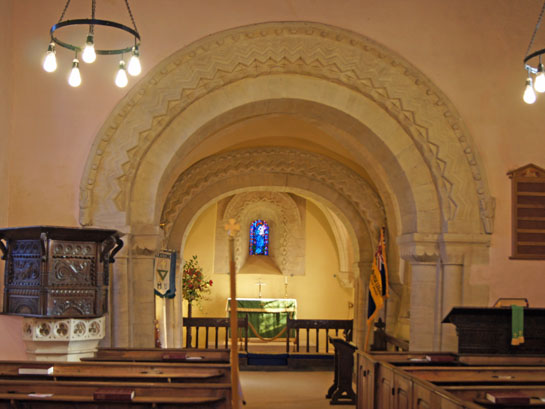 |
 |
|
Left: The arch to the original Norman tower (foreground) and the sanctuary in the background with its own arch. Right: The Norman east window with its quite elaborate decorative moulding and c20 glass. |
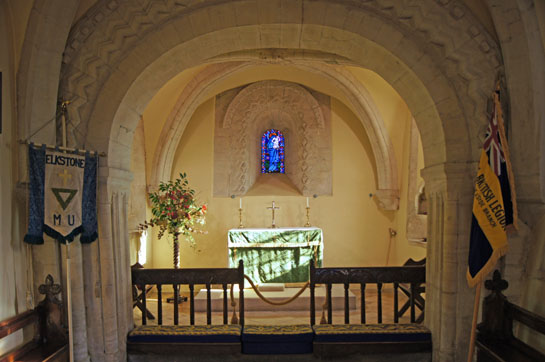 |
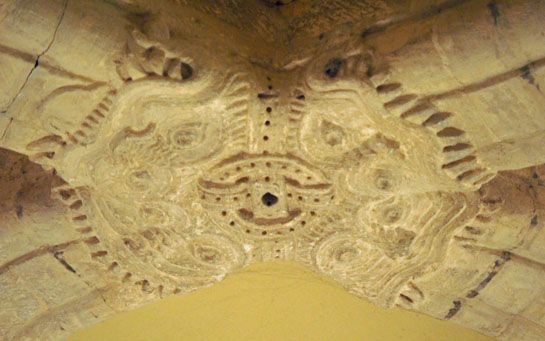 |
||
|
Left: Looking through the sanctuary arch. Note the quadripartite ribbed vault and its central boss. Right: The roof boss, which is formed of four grotesque heads, surrounding a typically-Norman ribbon motif. |
|
|
|||||||||||||||||||
 |
|
The glorious tympanum surrounded by beak-head mouldings. Above Christ’s head is the Hand of God. His left hand is holding the Book of Judgment. To His left and right are emblems of the Four Evangelists: the Angel of St Matthew, bull of St Luke, lion of St Mark and eagle of St John. An agnus dei (lamb of God) faces St John. Christ is sitting on a cushioned throne. Others have apparently been deluded into thinking it is a Roman arena or an ancient sea galley! A grotesque head entwined with vines completes the scene to the right. |
|||||
 |
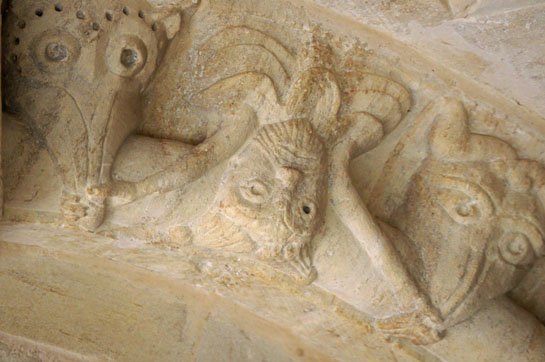 |
||||
|
Detail from the Beakhead moulding. Left: A rather splendid lion looks on as a monstrous serpent devours his own tail. Right: An inverted figure uses his hands to hold the two adjoining beaks closed. |
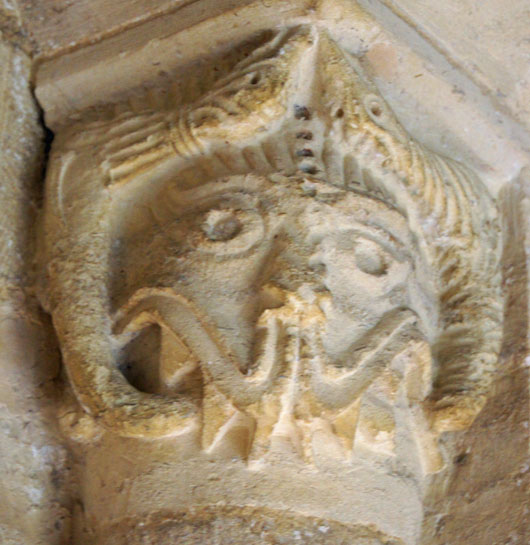 |
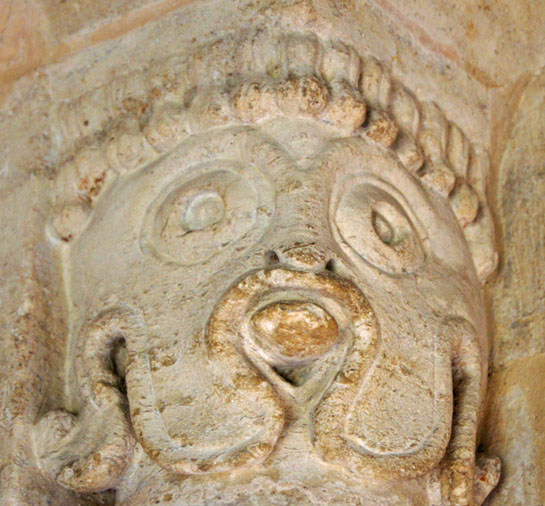 |
||||||||||||||||||||||||||
|
The two grotesque south door capitals. Left: Two monsters are crawling from the creature’s mouth - possibly an allegory for lies and deceit? Right: A serpent seems to have wrapped himself round the face of this creature. |
|||||||||||||||||||||||||||
|
The North Corbel Table |
|||||||||||||||||||||||||||
 |
|||||||||||||||||||||||||||
 |
|||||||||||||||||||||||||||
 |
|||||||||||||||||||||||||||
 |
|||||||||||||||||||||||||||
 |
|||||||||||||||||||||||||||
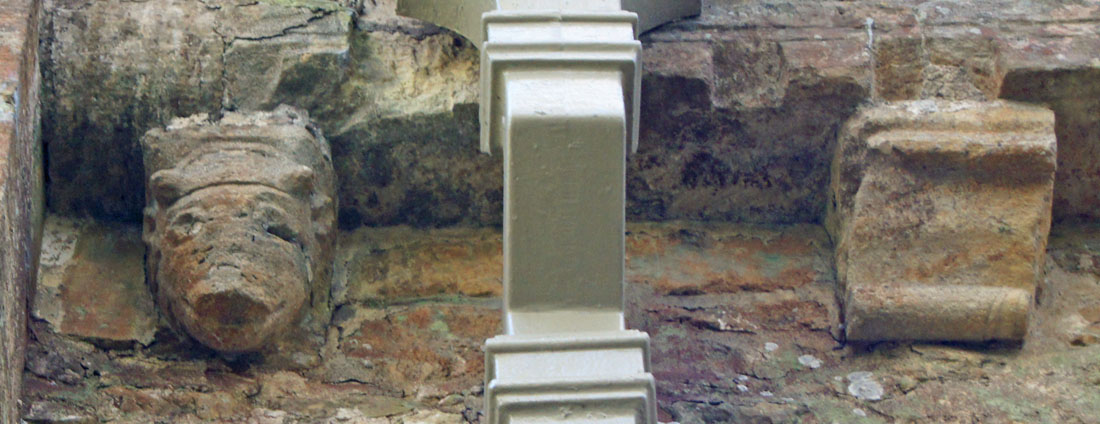 |
|||||||||||||||||||||||||||
|
The South Corbel Table |
|||||||||||||||||||||||||||
 |
|||||||||||||||||||||||||||
 |
|||||||||||||||||||||||||||
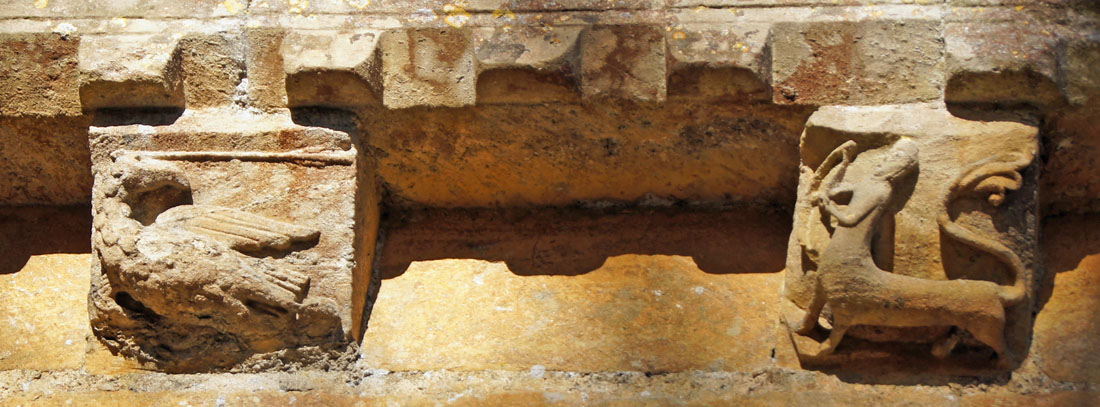 |
|||||||||||||||||||||||||||
 |
|||||||||||||||||||||||||||
 |
|||||||||||||||||||||||||||
 |
|||||||||||||||||||||||||||
 |
|||||||||||||||||||||||||||
 |
 |
|
|
||||||||||||||||||||||||||||||||||||||||||||||||||||||||||||
|
These four carvings are perched about half-way up the corner buttresses of the tower. This form of tower buttress at a 45 degree angle to the tower itself was known to the mediaeval masons as the “French Style” presumably indicating its origins. The tower replaced the axial one that was removed in the c13 and the Church Guide puts the western tower 200 years later. That seems about right because the early c15 seemed to see a real revival of secular external stone figure carving. Carvers of this period loved images of musicians (see Adderbury (Oxon) and Ryhall (Rutland) for other examples) and why not? The churches of the day functioned as much as village halls as they did as religious centres. Above Left: The Church Guide claims this to be a “shawm player”. Well it’s the right period for a shawm but I’ve never seen an instrument with parallel rows of holes and, as recorder player myself, I have no idea how you would play one whilst still holding the instrument! I guess the carver was no musician. Above Right: A lutanist (I’ve always wanted to use that word!) sitting cross-legged playing his instrument that has a sound board that is perforated like a crumpet! Note that these musicians have very similar faces. Below Left: A grotesque face appears above the little masonry beam that supports each of these carvings. Below Right: An unidentifiable animal. He looks as if he might have been quire fierce originally. Note, however, that our carver was no better a student of animal anatomy than he was of the mediaeval orchestra! |
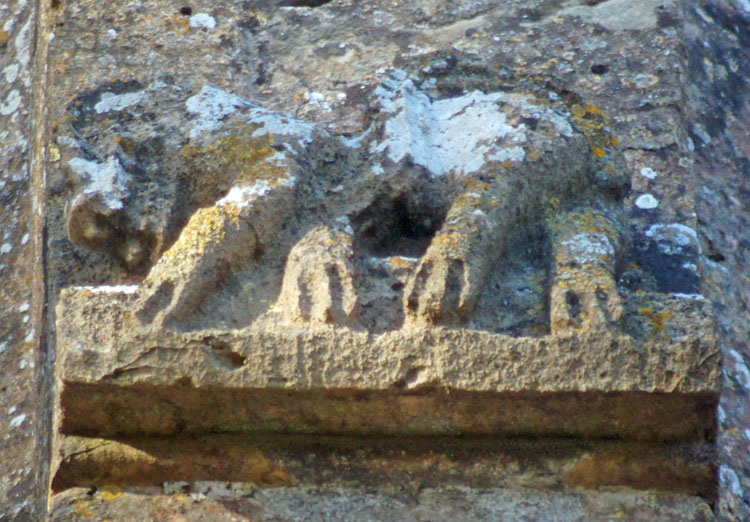 |
|||
 |
|||
